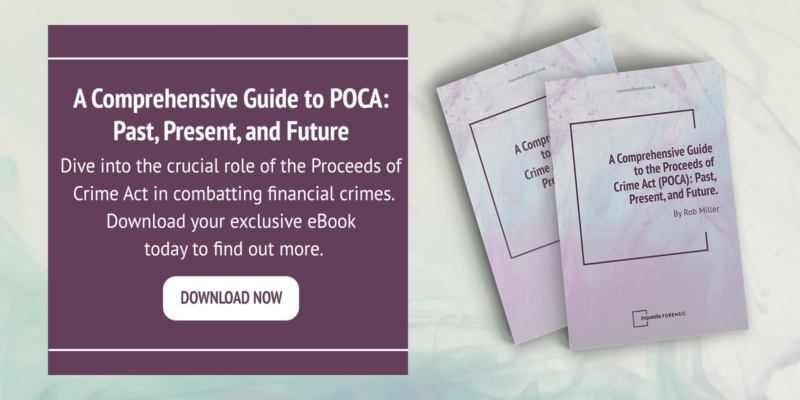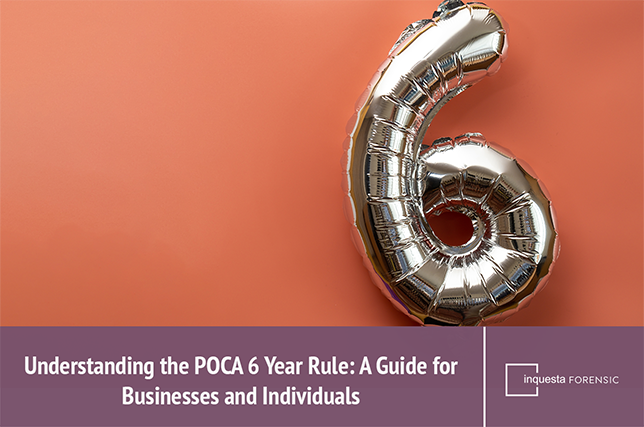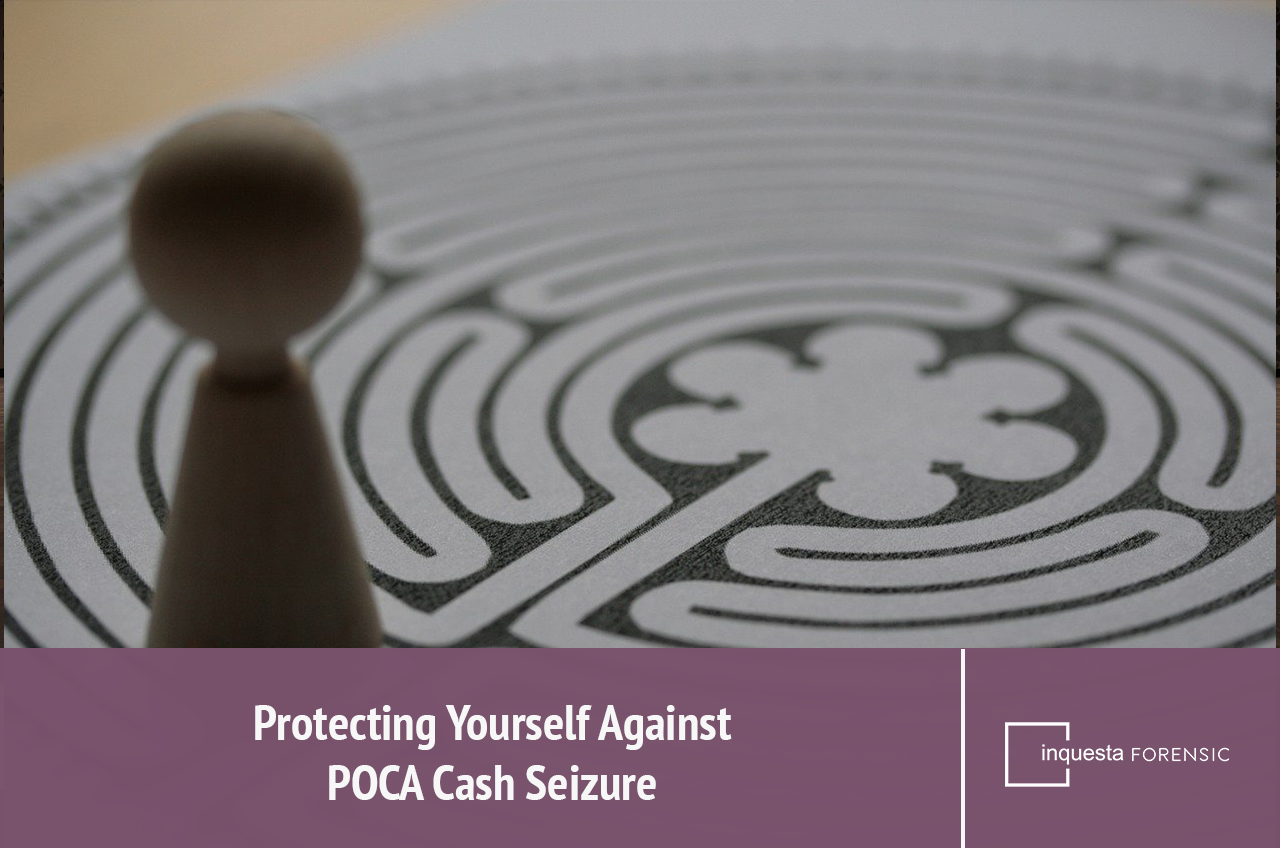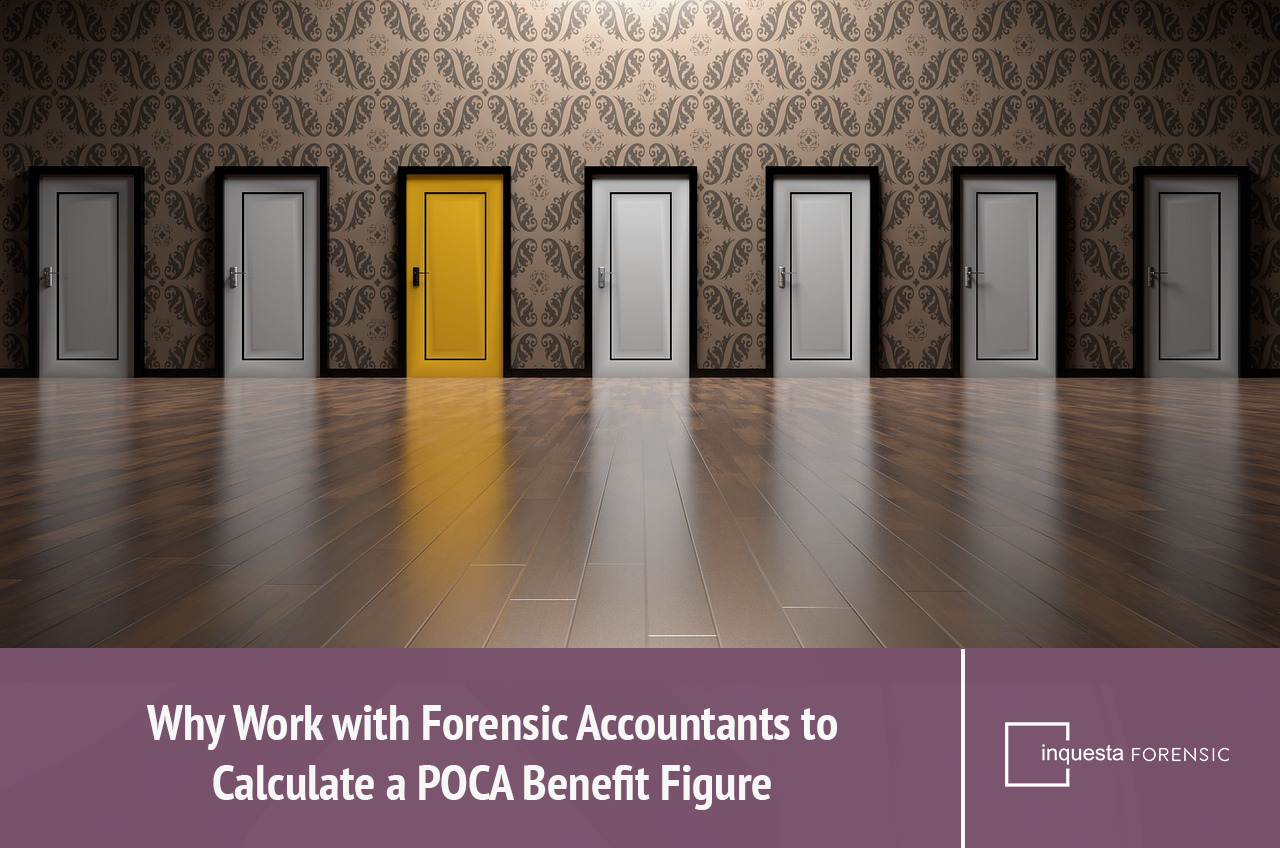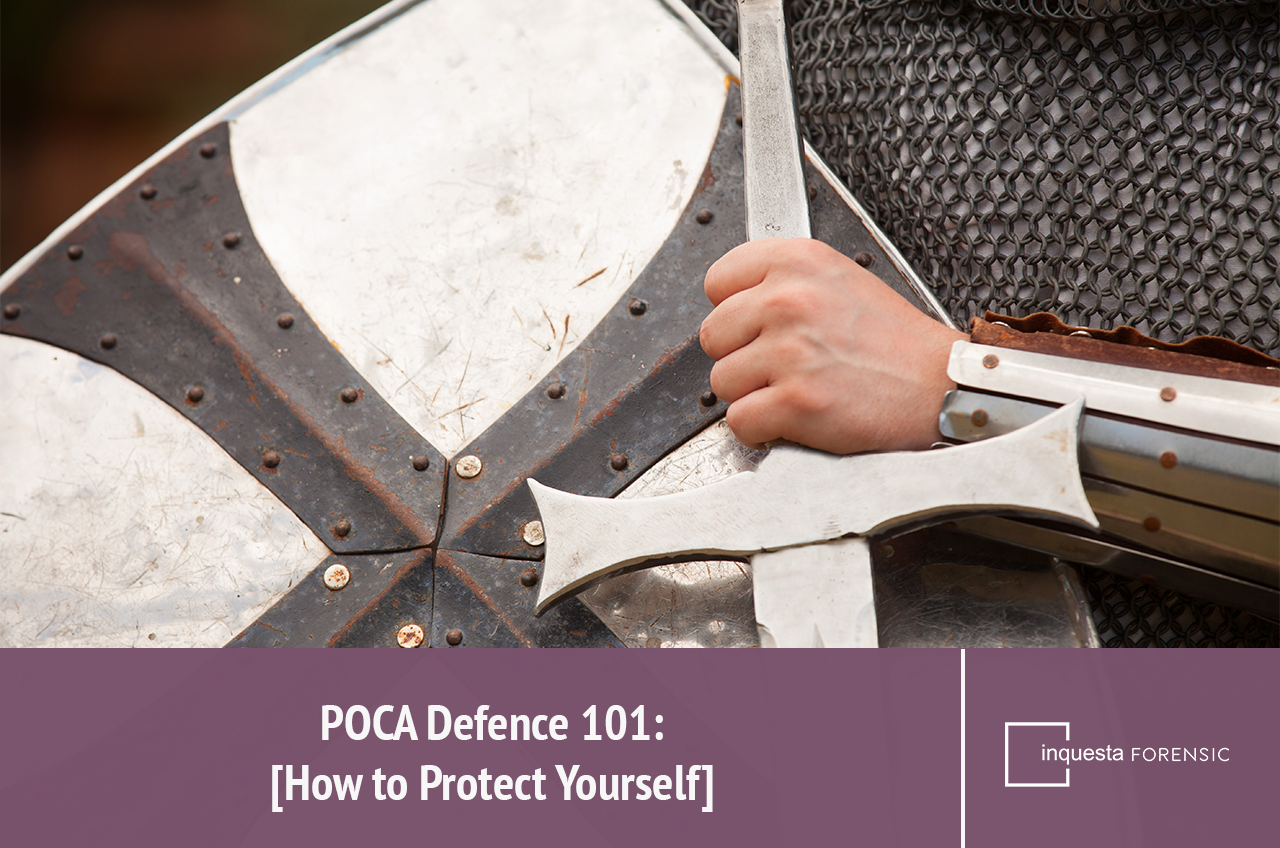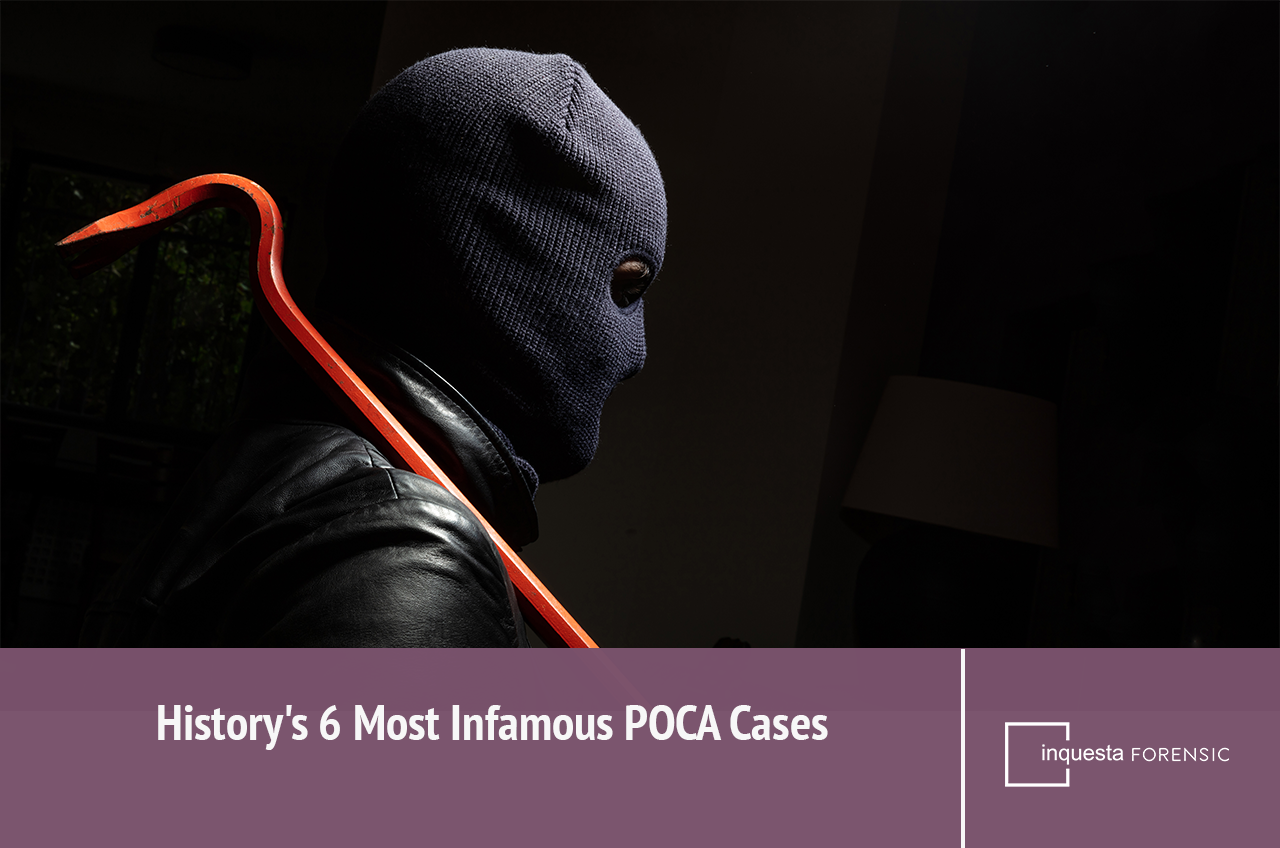Understanding the intricacies of the Proceeds of Crime Act 2002 and the POCA confiscation timetable is crucial. Proceeds Of Crime Act confiscation is a legal mechanism designed to hit criminals where it hurts them most — their finances.
Regardless of which side of the process you are on, it is of the utmost importance that you understand what a Proceeds of Crime Act timetable is if you want any chance of coming out the other end with a positive result.
What is POCA Confiscation?
POCA confiscation, as per the Proceeds of Crime Act 2002, is the legal process that allows authorities to seize and confiscate assets and funds that have been obtained through criminal activities. The main goal of confiscations is to deprive the criminals of the financial benefits of their illegal activities.
The purpose of Proceeds Of Crime Act confiscation is to ensure that financial criminals not only face the legal consequences of their actions, but also have whatever financial benefits they’ve gained from the illicit activities returned to society. These ‘financial benefits’ can include:
- Funds in a bank account
- Property acquired
- Gifts given or received
Ultimately the process is a tool designed to deter criminal activities by hitting the criminals where it hurts them most — their wallets.
The POCA confiscation process includes multiple provisions for reviews, variations, and appeals to address circumstances and any questions that may arise throughout. This is vital to ensure total fairness in the proceedings and that assets and funds are never confiscated without due cause.
The POCA Confiscation Timetable
When a conviction triggers POCA proceedings, a confiscation timetable will be required. This marks the beginning of the official period of confiscation and includes all stages of the process — from initial conviction and the assessment of benefits, to the issuance of the confiscation order, the repayment window, and asset valuation when required.
The highly structured nature of the POCA confiscation timetable ensures that every single step is carried out to the letter, according to the law. This is vital in ensuring fairness and consistency during the process. Understanding this timetable is crucial in comprehending how the process will actually unfold.
A step by step breakdown of the POCA confiscation timetable is as follows:
Step One: Conviction
The Proceeds Of Crime Act confiscation journey will always begin with a criminal conviction. Upon an individual being found guilty of some form of criminal offence that has financially benefited them, it will trigger the initiation of the POCA confiscation process.
Examples of financial crime that could begin this process includes:
- Money laundering
- Production & distribution of drugs
- Fraud
- Bribery/corruption
- Cybercrime such as hacking, cryptocurrency fraud, etc.
- Organised crime
The goal behind the court taking this first step is to begin the process of ensuring that criminals cannot profit from their illegal activities.
Step Two: Identify the Benefit
As the process unfolds, the court will focus on identifying the financial ‘benefits’ that the convicted individual has gained as a result of their criminal actions. As mentioned above, this can include money, assets, and tainted gifts.
This stage in the process will involve a meticulous assessment of the total value of all assets, funds, or other advantages that the convicted individual has acquired over the years. Getting to grips with the full-extent of these financial gains is vital to calculate the amount that should be subject to confiscation later in the process.
Step Three: Value for Confiscation
As mentioned above, a vital part in the POCA confiscation timetable is the determination of the “available amount”. The available amount represents the value of all of the assets and funds that can be legally confiscated at that time.
The value amount is based on the defendant’s realisable assets that can easily be converted into a cash amount. The available amount will determine the amount the defendant will be obligated to return to ‘the state’ as per the confiscation order.
Step Four: Confiscation Order
Once the financial benefit and available amount has been determined, the court will issue a confiscation order. This will specify the amount the defendant is required to repay.
Compliance with this order is mandatory. Any failure to meet this obligation will result in further penalties.
Step Five: Payment Window
The defendant will usually be granted a set timeframe to fulfil the payment as stated in the confiscation order. This window will usually be around six months. However, it will often depend on the specifics of the case.
Meeting this deadline is crucial, as it acts as an opportunity for the convicted individual to comply with their legal financial obligations before additional penalties are added on top.
Should the defendant fail to pay the confiscation amount in full within the specified timeframe, the court may impose a default sentence. One of the most severe punishments for overdue payment, the additional prison time will depend on the severity of the arrears. The more owed, the longer the sentence.
Step Six: Asset Realisation
In some situations, in order to fulfil the confiscation order and recover the entire amount specified, the court may order the sale of the defendants assets.
These assets can range from real estate, to vehicles, and financial holdings. All proceeds generated from these sales will go towards satisfying the financial obligation owed. Asset realisation plays a key role in ensuring that criminals will not benefit from their illegal activities — this is vital to upholding justice and ensuring financial integrity at all times.
The Pursuit of Justice: How Our Forensic Accountants Can Assist in POCA Confiscation Cases
The POCA confiscation timetable is a powerful tool in the fight against financial crime. It allows authorities to dismantle criminal networks and acts as a deterrent against any potential unlawful activities in the future.
From the initial connection to the final asset realisation, each step in this structured process must be executed to perfection. It is in this intricate legal journey that the expertise of a forensic accountant will come in handy.
The Inquesta Forensic team of experts can help meticulously review financial records, transactions, and accounts in order to uncover vital evidence to support our clients. They can also do their part in assessing the value of the relevant assets, a critical step in calculating the confiscation amount.
With their expertise and experience in investigation, assessment, compliance, and reporting, our team of forensic accountants can ensure that any investigation adheres to all legal requirements and regulatory standards.
If you need support on a Proceeds of Crime Act confiscation case, whether you need to accurately value all of the convicted parties ill-gotten gains, or you have been accused of having hidden assets and need assistance, we are here. The Inquesta Forensic Proceeds of Crime Act confiscation service is designed to ensure that a fair process is followed at all times. Get in touch today to find out more about how we can help you.
- The Essential Role of Forensic Accounting in High Net Worth Divorce
- How to Value a Startup Business: A Guide for UK Entrepreneurs
- Pig Butchering Scams: Guide to Crypto Romance Fraud
- Shareholders’ Disputes: How Business Valuation Helps with Shareholder Dispute Resolution
- 11 Costly Business Valuation Errors (And How to Avoid Them)


